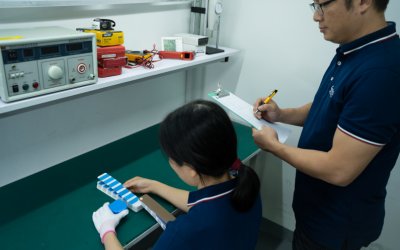In recent years, an increasing number of companies have chosen to either adopt a China Plus One strategy or move production out of China altogether.
While many importers initially flocked to China for low labor costs, the cost of manufacturing has increased over time. For labor-intensive products like garments and textiles, this is especially true, so many importers have shifted production to Southeast Asia — countries like Vietnam, Indonesia, and Cambodia.
Additionally, many large consumer brands have taken an interest in supply chain diversification. They want to avoid concentrating too much of their manufacturing in one country since unexpected trade policy shifts, economic sanctions, or regulatory changes might send shockwaves through their supply chains.
So if you are moving production out of China, the question becomes, how do you do so smoothly and maintain the same level of quality? That’s what we will discuss in this article.
Table of Contents
The Challenges You Need to Overcome
When moving production out of China — regardless of the country you move to — certain start-up hurdles are inevitable. And it is never possible to eliminate them, but you can take steps to minimize them.
Hopefully, with your existing suppliers in China, your production is running like a well-oiled machine. At the start of your relationship, there may have been kinks to work out. Perhaps one or more production runs didn’t yield the results you were expecting, quality-wise. Maybe the color of the product was off, the stitching didn’t look right, or there were too many defects of some kind.
It’s also possible that at some point, you had issues with the supplier that led to delayed shipments and missed timelines. But over time, you determined the cause of the problems and focused on supplier development so that you could get better results in the long run.
It is essential to think back on your history with existing suppliers in China and the issues you faced so that you can apply those learnings as you work with new manufacturers elsewhere. Let’s talk about how to do that.
3 Tips to Consider When You Make Your Move
The first thing you need to do is make sure you choose the right supplier, to begin with. Not all factories in India, Thailand, Indonesia, or any other low-cost country are created equal. That means you need to do an excellent job of qualifying them and get a clear picture of their strengths and weaknesses, which leads us to the topic of factory audits.
Tip #1 Conduct a Factory Audit to Assess the New Supplier
When you find a factory that seems to be an ideal fit for your needs, conduct a factory audit. A factory audit will allow you to assess their capacity and capabilities. If you do not have the resources to complete the audit using internal staff, consider hiring a third-party (like Insight) to conduct it for you.
If a supplier produces a good sample and you’re happy with their pricing, but you uncover weaknesses during the audit, this doesn’t have to be a deal-breaker. But the results of your audit can help you find potential issues before they happen, putting you in a better position to take proactive measures and do a good job of managing supplier quality.
Tip #2 Share Your Defect History With the New Supplier
You’ve likely encountered product defect issues at some point during your supplier relationship in China. These may have been related to the specific material and design choices you had made. It’s also likely that you worked with the factory to eliminate those defects from future production runs.
Gather up all the information you have about your history with the supplier in China and share it with the new “plus one” supplier. Sharing this history allows them to get a better idea of the challenges they may face during production, and you can work together to prevent those same issues from reoccurring.
Tip #3 Pad Your Timelines to Account for Unexpected Issues
Using the timelines you’ve set with your current supplier can be a big mistake when working with a new supplier. If you have a longstanding relationship with a supplier in China and are working with a six-week lead time, that’s probably not the lead time you started with.
It might be a good idea to take some extra time for a DUPRO inspection and pad your timeline to account for unexpected failures and for the time needed to rework. Hopefully, things will go according to plan, but of course, that doesn’t always happen, and you don’t want to get yourself into trouble if things don’t work out as planned.
Wrapping it Up and Some Final Thoughts
The three tips above relate to working with a new supplier outside of China, but there are certain basics you should always keep in mind. In addition to conducting audits, sharing your defect history, and padding your timelines, you should also be sure to provide precise specifications and set the proper expectations.
We have a saying in the industry that “Quality cannot be inspected into a product.” Good quality begins with good product design and accurate specifications that your manufacturers can follow to the letter. It also needs to be built into the manufacturing process. You need to be proactive to ensure your suppliers are clear on what you expect from them.
When sourcing products in low-cost countries, it’s important to carefully assess your suppliers. Download the following guide to learn more about how to do this.
Free Guide
How to Prepare for a Factory Audit
A factory audit helps you assess a supplier's systems, capacity, workplace environment, or capabilities to ensure they meet your requirements as a buyer.
But which type of audit should you conduct, and which points should you cover on your checklist? In this free guide, you'll learn how to run an effective supplier assessment.





0 Comments